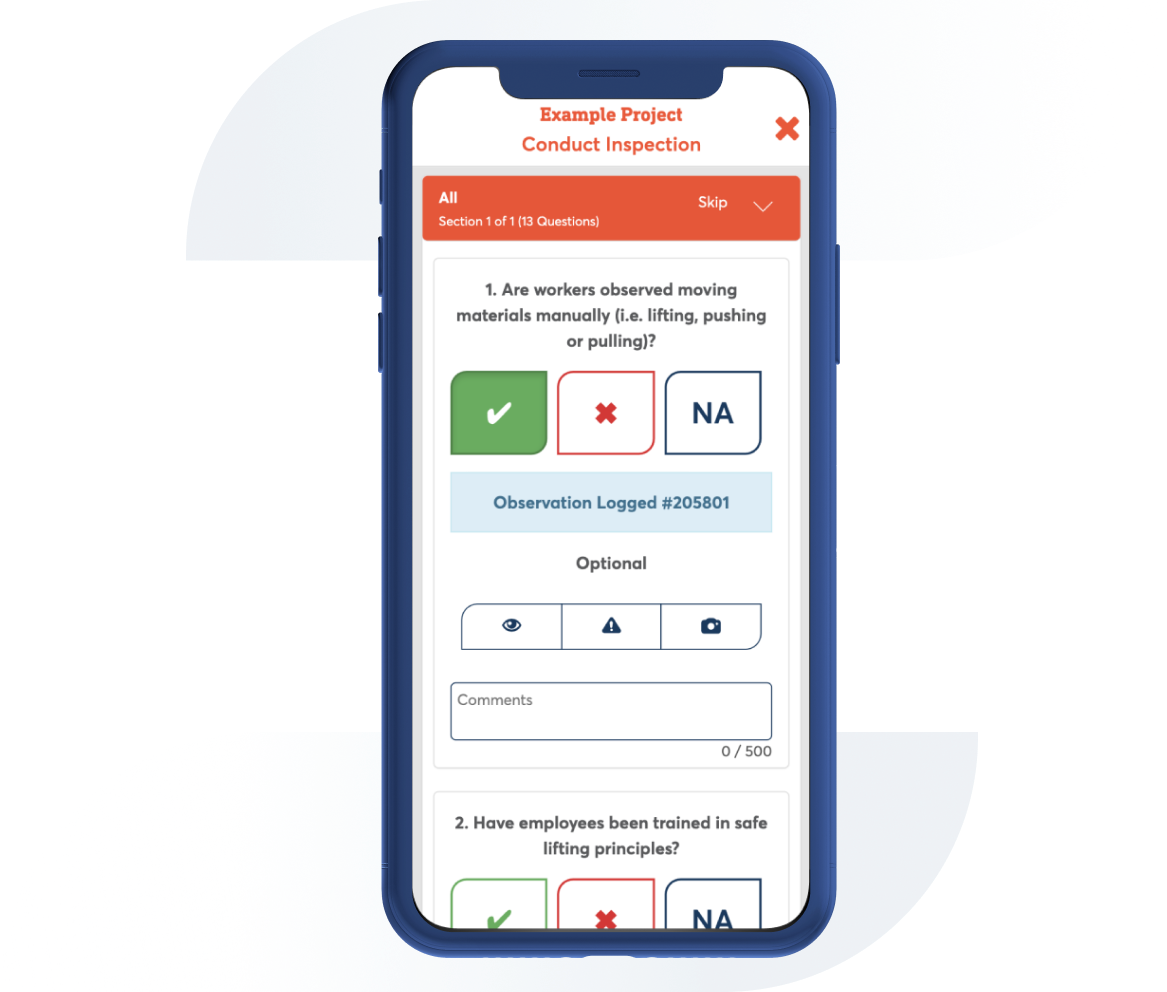Workshop and Tool Safety Checklist
Contributor: Safesite Jurisdiction: OSHA
Use this checklist to inspect your workshop and tools to ensure they are safe and free from damage and are operating properly. Make sure your workshop has adequate lighting, ventilation and room for repairs.

Template Preview
1. Are only authorized and trained personnel permitted to use machine tools, corded electric power tools, pneumatic or powder-actuated equipment?
Actions
2. Are flexible cords free from damaged insulation, taped repairs, crimps, crushing and UV damage?
Actions
3. Are flexible cords (I.e. "extension cords") used at the facility properly rated and listed to support the load required?
Actions
4. Are all hand tools inspected for damage before each use; and, if damaged, taken out of service and reported to a supervisor?
Actions
5. Are all Impact tools, such as hammers, drift pins, wedges, and chisels, observed to be free of mushroomed heads?
Actions
6. Are all wood handled tools, such as hammers and shovels observed to be free from cracks, splinters and other damage?
Actions
7. Is there adequate space in the workshop for projects and machinery repair?
Actions
8. Is there adequate lighting and ventilation for the types of projects taking place?
Actions
9. Are overhead hoists and hydraulic jacks available and have they been load-rated and inspected?
Actions
10. Are load-rated stands available to support equipment and vehicles being worked on?
Actions
11. Are wheel chocks in use for vehicles and equipment being worked on (if not completely off the floor)?
Actions
12. Are tongue guards at the top of the wheel of bench, floor stand, and cylindrical grinders adjusted to the decreasing diameter of the wheel so that the gap is never more than one-fourth (1/4) of an inch?
Actions
13. Are compressed air tools, such as portable compressors, hoses and nail guns kept in good repair, free of leaking grease, oil and accumulated foreign matter?
Actions
14. Is waste oil, used coolant, lead-acid batteries and oily rags stored in properly labeled, closed containers prior to disposal by a licensed waste removal contractor?
Actions
15. Is the welding area segregated from the shop area by welding screens or barriers?
Actions
16. Are oxyacetylene cylinders, hoses and fittings in good condition and properly stored when not in use (I.e. regulator off and valve caps on)?
Actions
17. Is adequate ventilation or portable fume exhaust equipment available in the welding area?
Actions
18. Write Comments or Remarks here:

Can't find what you are looking for?
